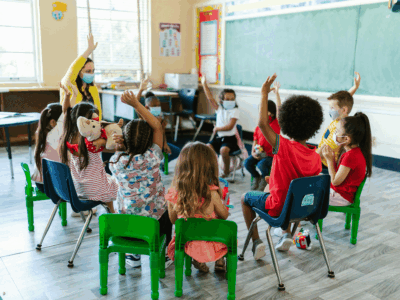Social and emotional learning is critical to deal with current challenges
Children need to learn social and emotional skills if they are to thrive in the workplace of the 21st century. We can all attest to the fact that there has never been such a time as this to provide social and emotional learning (SEL) to learners, writes MANCOSA academic, Thembeka Myende.

Children need to learn social and emotional skills if they are to thrive in the workplace of the 21st century. We can all attest to the fact that there has never been such a time as this to provide social and emotional learning (SEL) to learners, writes MANCOSA academic, Thembeka Myende.
We live in unprecedented times due to the COVID-19 pandemic and other associated issues in which many learners (and teachers alike) are experiencing some form of debilitating shift from what was known as “normal”.
Learners are currently dealing with a lot: single-parent households, orphaned children, violence infested homes, neglected children and child-headed households are most vulnerable due to their underlying impediments.
Sadly, statistics on psychosocial issues such as absenteeism, depression, teenage pregnancy and suicide among learners have significantly increased over the last few months, marked by the decrease in social connection and associated trauma. For some learners, just going to school on its own could be the only encouragement they need to get them through these challenging times. Social and Emotional Learning is a critical need and should be a priority.
Teaching during these times requires much flexibility, compassion and lots of patience. Unfortunately, most teachers have neither the time nor the capacity to do this. Instead, we see learners being inundated with work to catch up on the syllabus – neglecting the provision of SEL. Many teachers often feel as though they generally do not have the time or tools to support SEL in the classroom. Some teachers are already practising SEL although more developments can be incorporated to support and maintain learners’ social awareness, resilience and mental health.
What is Social and Emotional Learning? According to the Collaborative for Academic, Social, and Emotional Learning (CASEL), it is the process through which all young people and adults acquire and apply the knowledge, skills and attitudes to develop healthy identities, manage emotions and achieve personal and collective goals, feel and show empathy for others, establish and maintain supportive relationships, and make responsible and caring decisions.
In addition, SEL is a holistic approach to learners’ development which includes equipping learners with skills to meet the demands of the classroom and empowering learners to make informed decisions in whatever situations they may encounter. Incorporating SEL into the classroom requires time and deliberate application by teachers. It requires daily commitment by teachers to create safe and secure spaces of learning on the one hand while tackling academic matters on the other.
The first step towards providing SEL reflects in the warmth and support the teacher demonstrates so that learners feel included and appreciated, creating a space where it is okay to make mistakes and where the teacher checks in with learners about academic and non-academic matters. Secondly, regularly creating a space for learners to just talk or offload (even if its among themselves) about their fears, anxiety and loss is a crucial part of effective SEL.
Another important aspect of SEL is practising mindfulness where learners are engaged in the process of being aware of their emotions and are empowered to deal with anxiety. When applied appropriately, SEL could pave a way for academic matters to improve.
Teachers may not necessarily have the time or tools to support SEL in the classroom as they are trying to catch up on an already packed syllabus. The Department of Basic Education could consider seeking external support to provide SEL by engaging social workers. There are almost 9 000 unemployed social workers in the country whose expertise could go a long way in providing psychosocial services to learners and teachers alike. It would be careless to neglect the use of SEL when it is needed the most.
ENDS





